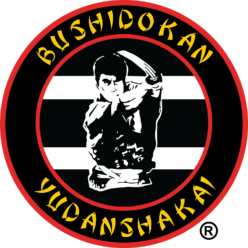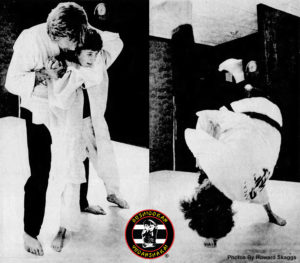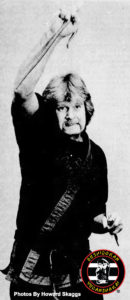By Jim Harrison, Bushidokan-Ryu Founder & Head Instructor
© 2018 – Bushidokan™ Yudanshakai, Inc. All Rights Reserved.
Keep It Similar
Like most martial artists, I also once suffered from the versatility syndrome. Whereas, every attack must have a separate and distinct counter attack. One of the reasons we do this is to show off our diverse repertoire of techniques. Plus, if you make your living teaching a martial art, you normally give a lot of demonstrations. Consequently, you need to show your various “waza” (techniques and tactics). An audience needs to be entertained, as well as educated, and if the instructor kept doing the S.O.S. (Same Old Stuff), potential customers probably would not respond as receptively as they would to many different techniques and tactics. Therefore, the need to be versatile instigates the desire to attempt more flamboyant and spectacular feats. However, when your life (or even your health) is on the line, Simple and Similar will prove out over flashy, flamboyant, and versatile…time after time!
If a certain technique / tactic is the best (or one of the best) to use against a specific attack, then it (or a similar technique / tactic) is very likely to be the best one to use in most other similar situations. This is true for several reasons:
One: PRACTICE…Say you have five Weapon Threat Defensive Tactics that utilize a very similar tactical series. Therefore, every time you practice any one of those five defense tactics, you are essentially practicing the other four. Consequently, you are building five times the response, reflex, and pattern programs than you would if you used five dissimilar tactical responses in the five separate similar situations.
Two: STRESS…In a stressful situation, particularly a dangerous or life threatening situation, your brain does not operate quickly (or even very well). For the most part, your brain will only respond to conditioned reflexes. The more conditioned the reflex and pattern mode is, the faster and more effectively your brain will respond to using it. You will simply have a five hundred percent better chance of responding and executing a “Five for Five” pattern programmed into your conscious / subconscious than you would with a “One out of Five” possible pattern. Therefore, plain common sense should dictate to you to play the odds. The less you have to recall under stress, the better your chances are of surviving and even prevailing over an assailant.
Three: REPETITION…Repetitive practice of similar tactics not only hones your tactical recognition, reflex, and response factors, but each technique used in that tactical series becomes fine-tuned for speed, power, and accuracy. Practical Practice Equals Practical Application – That equates to a longer, healthier, and happier life.
Use the SAME OLD STUFF In The SAME OLD SITUATIONS!
In Summary:
Don’t allow yourself to get surprised. Use the Element of SURPRISE yourself! Remember, the Element of Surprise has won (and will win) more fights, battles, and wars, from the first monkey with a stick, to the last nuclear war, than all other factors combined.
Keep it SIMPLE, Simon…Leave the flash to the movie stars. They get to choreograph and practice each sequence as many times as necessary…You’ll only get one shot (no pun) in the mean street.
Keep It SIMILAR…Save the versatility for the demos, just don’t con yourself into using or teaching too many diverse tactics for real-life situations. Let me give a further example…Most martial artists (especially karate-ka) often have hundreds of various techniques that they can perform, while boxers only have five major techniques. Yet boxers do five to ten times better in street fights than do most martial artists (especially karate-ka). Plus, the average boxer will knock the crap out of ninety-five percent of the black belts in the world, regardless of the discipline or art. Then again, I’d hate like hell to attempt to “Out-Box” a dude with a knife, a club, or a broken bottle. Actually, as a martial artist, we have many superior techniques (too many for a lot of us). So, let’s fine tune our best techniques and use them sparingly, practically, and efficiently!
SIMPLE SELF-DEFENSE Equals…SURPRISE, SIMPLICITY & SIMILARITY

 With that, a 14-year old girl approaches Harrison. He turns her around, grabs her from behind as to choke her. She takes a deep breath, squats and hoists her instructor over her shoulder, slamming him against the cold, hard mat.
With that, a 14-year old girl approaches Harrison. He turns her around, grabs her from behind as to choke her. She takes a deep breath, squats and hoists her instructor over her shoulder, slamming him against the cold, hard mat. The Shi-han also works with some of his favorite martial arts weapons – nun-cha-kas, which are two sticks held together with rope; sais, which look like pitch forks; tui-fas, which are Japanese well-wheel handles, and ko-bos, small, short sticks.
The Shi-han also works with some of his favorite martial arts weapons – nun-cha-kas, which are two sticks held together with rope; sais, which look like pitch forks; tui-fas, which are Japanese well-wheel handles, and ko-bos, small, short sticks.